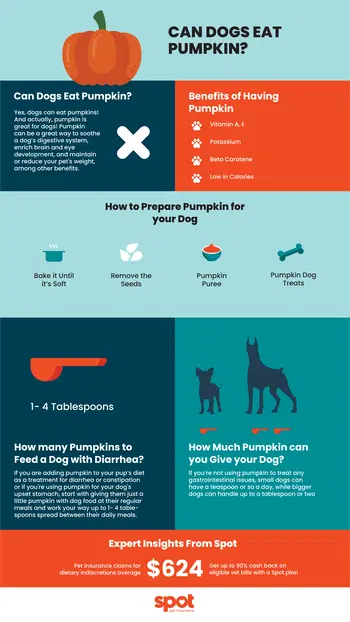Dogs are some of our most important family members. We want to care for their health as much as possible. Our canine companions are cute, but they don’t always know which foods will upset their stomachs. That's why it’s important that we do our best to keep track of what they can and cannot eat. Although it’s tempting to give your dog the last bit of food on your plate (I know, they look so cute when they beg!), we need to remember that some of our favorite foods are toxic to them. Many fruits are perfectly fine for canine consumption, for example, apples (with no core and seeds), apricots, cucumbers, and blueberries. Other fruits, however, like grapes and raisins, are not so good. Fruits can be a tricky food group when it comes to sharing a snack with our dogs because there is no exact set of rules to determine which types of fruits can and cannot be eaten by our pups.
Dogs are omnivorous, meaning they need a mix of plant and animal material to maintain a balanced diet. However, due to the high-quality, nutritionally complete options available for commercial diets, it isn’t necessary to supplement your dog’s diet with fruits. However, when chosen correctly, certain fruits can be a fun addition to your pet’s diet!
While your dog may beg for more, remember that treats, including fruit, should take up no more than 10 percent of your dog’s diet. If you are giving your pup fruit alongside other dog treats, be sure to adjust the number of treats given so as to not exceed the 10 percent rule.
Can Dogs Eat Pumpkin?
Yes, dogs can eat pumpkins! And actually, pumpkin can be great for dogs! Pumpkin can be a great way to help soothe a dog’s digestive system, enrich brain and eye development, and maintain or reduce your pet's weight, among other benefits. The fiber found in pumpkin is also great for regulating the growth of good bacteria in your pup’s intestines and stimulating more regular stools.
Pumpkins are also rich in vitamin A, which helps provide vital support for healthy eyes and skin, brain development, and immune function. When paired with the other vitamins and antioxidants found in pumpkin, our dogs can benefit from a comprehensive immune support system.
In addition, the vitamin E, potassium, and beta carotene in pumpkin help keep away free radicals that can trigger abnormal cell growth and premature aging in dogs. They also work to keep your dog’s internal organs and muscles healthy. Lastly, pumpkin can aid in controlling your pup’s weight as it is high in fiber and low in calories.
However, there are some caveats that come with canine pumpkin consumption. Although plain canned pumpkin can provide nutritional value for our dogs, the spices associated with it can be irritating and unhealthy for their diets. It is important to remember to always keep it as plain as possible if you will be serving pumpkin to your pet. Spices like cinnamon and nutmeg, as well as other additives and sugars, frequently added to pumpkin products can make your dog feel very sick.
Nutmeg can be especially irritating because it contains the toxin myristicin, which can cause disorientation, high blood pressure, and even seizures in your dog. Another toxin to look out for and avoid is xylitol, which can be deadly for dogs. Xylitol is sometimes found in canned pumpkin puree that is labeled as “sugar-free,” so be conscious when reading ingredient labels.
Keep in mind that not every dog will react the same to eating pumpkin. If feeding your pooch this snack doesn’t seem to be helping his or her gastrointestinal issues or is causing a poor reaction, consult your veterinarian before feeding them any more pumpkin.
How To Prepare Pumpkin for Your Dog
Pumpkin is considered the safest and healthiest for your dog when served plain. Canned pumpkin may have more nutrients than fresh pumpkin because fresh pumpkin has a higher water content. The best choice for your pet is plain canned pumpkin without added sugars, ingredients, or fillers. So while it may be tempting to share a sweet holiday treat with your pet, please remember that no, dogs shouldn't eat pumpkin pie!
Other good options are plain fresh pumpkin and pumpkin flesh. If you choose to feed your dog a fresh pumpkin, keep in mind that not every part of a pumpkin is safe for your dog, and pumpkin seeds, the pulp, and the stem should all be removed because they can cause an upset stomach and indigestion.
Refrain from reusing your Jack O’Lanterns as snacks for your pet. Old carved pumpkins can breed bacteria and mold that will make your pet very sick!
If you’re feeding your dog fresh pumpkin, bake it until it’s soft and remove the seeds before serving. Another option is to make pumpkin puree for your dog, this is a great option if you're using fresh pumpkin but you can also use canned pumpkin puree, which can be served as is. You can also purchase pumpkin dog treats or consider making pumpkin peanut butter treats for your dog! The combination may sound weird but it tends to be a huge hit!
There’s a good chance you’ll end up with some leftover pumpkin! That’s no problem, as long as you know how to store it. Store any extra by freezing it or putting it in an airtight container and keeping it refrigerated, but make sure to use it within the next few days.
How Much Pumpkin To Give A Dog With Diarrhea?
As with anything, you want to maintain a healthy balance with the amount of pumpkin you’re giving your pet. A little can go a long way.
If you're adding pumpkin to your pup’s diet as a treatment for diarrhea or constipation or if you're using pumpkin for your dog's upset stomach, start with giving them just a little pumpkin with dog food at their regular meals and work your way up to 1- 4 tablespoons spread between their daily meals.
How Much Pumpkin Can You Give Your Dog?
If you’re not using pumpkin to treat any gastrointestinal issues, small dogs can have a teaspoon or so a day, while bigger dogs can likely handle up to a tablespoon or two.
Pumpkin is rich in vitamin A, but too much of this vitamin can actually be toxic to dogs, so always use caution in the amount you’re feeding your furry friend.
To help prevent dehydration frequently caused by fiber-rich ingredients, make sure your dog is consuming plenty of water when incorporating pumpkin into their diet.
If you aren’t sure how much pumpkin your dog can safely eat, consult your vet!

Expert Insights From Spot
While sharing our favorite foods with our pets can be tempting, it's important to remember that not all human foods are safe for dogs. Spot's internal data shows that pet insurance claims for dietary indiscretions average $642*, highlighting the importance of caution and research before sharing snacks with your pet.
Help Keep Your Dog Happy and Healthy
Here at Spot Pet Insurance, we care deeply about your dog’s health. We know how much you cherish their well-being and we want to be with you every step of the way. Pumpkin can be a healthy addition to your dog’s diet, just as it can be for yours.
For advice on other foods your dog can enjoy, check out Spot Pet Insurance’s dog tips. We provide you with plenty of informative materials that help you provide your pet with the best care! We also offer personalized pet insurance plans to help keep your dog protected, healthy, and happy. There is nothing that can come between the bond of you and your beloved pet. We want to help make sure that this bond can last for a long, long time.
Other Fruits That Are Safe For Your Dog To Eat
Pumpkin isn’t the only fruit with health benefits for your canine companion. If your dog tends to turn up its nose at a treat that’s been offered up too many times before, or if you simply want to add variety to their diet, you can try these fruits as well:
Remember that grapes and raisins are never safe to feed your dog. These fruits have enzymes in them that are toxic to dogs—avoid leaving grapes and raisins out around your dog the same way you avoid leaving chocolate out around them. We have compiled a big list of all the fruits your dogs should eat here.

As Spot’s resident cat enthusiast, I am dedicated to researching and sharing information that helps pet owners take the best care of their pets. Pet ownership comes with it’s share of challenges, but my goal is to help make this journey easier.
*Jan 2019 to Aug 2024 Spot Pet Insurance Services, LLC claims data.
Boyers, Lindsay. "Can Dogs Eat Pumpkin?" PetMD, 09 Jul. 2025, https://www.petmd.com/dog/nutrition/can-dogs-eat-pumpkin.
Wall, Tim. "Pumpkin may support digestive health as functional pet food ingredient." Pet Food Industry, 26 Nov. 2024, https://www.petfoodindustry.com/nutrition/dog-and-cat-food-nutrition/article/15709111/pumpkin-may-support-digestive-health-as-functional-pet-food-ingredient.
Davidson, Ashley. "Can Dogs Eat Pumpkin?" Chewy, 02 Oct. 2025, https://www.chewy.com/education/dog/food-and-nutrition/can-dogs-eat-pumpkin.
"Is pumpkin safe for dogs and cats?" Animal Humane Society, n.d., https://www.animalhumanesociety.org/resource/pumpkin-safe-dogs-and-cats.
The information presented in this article is for educational and informational purposes only and does not constitute or substitute for the advice of your veterinarian.












